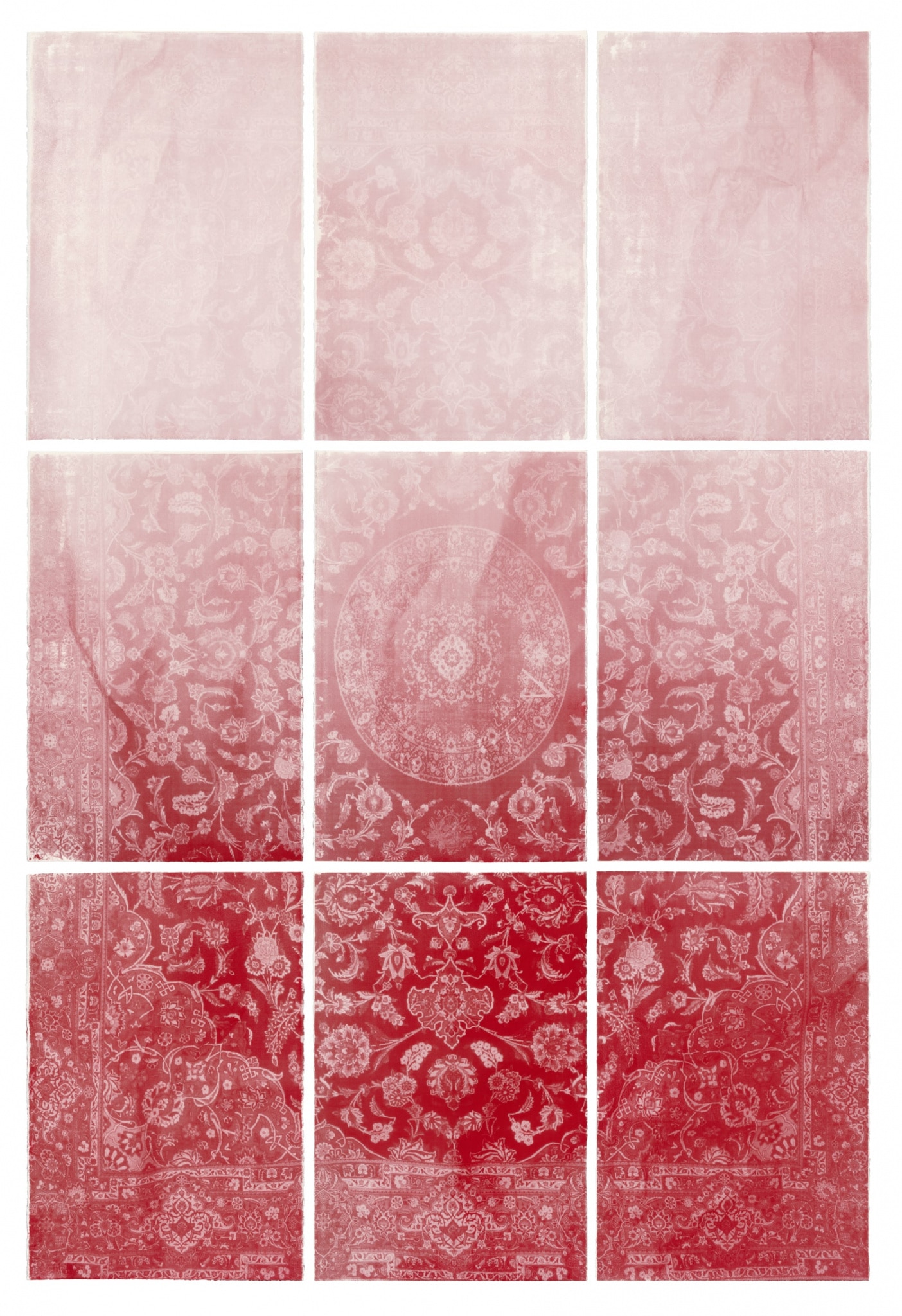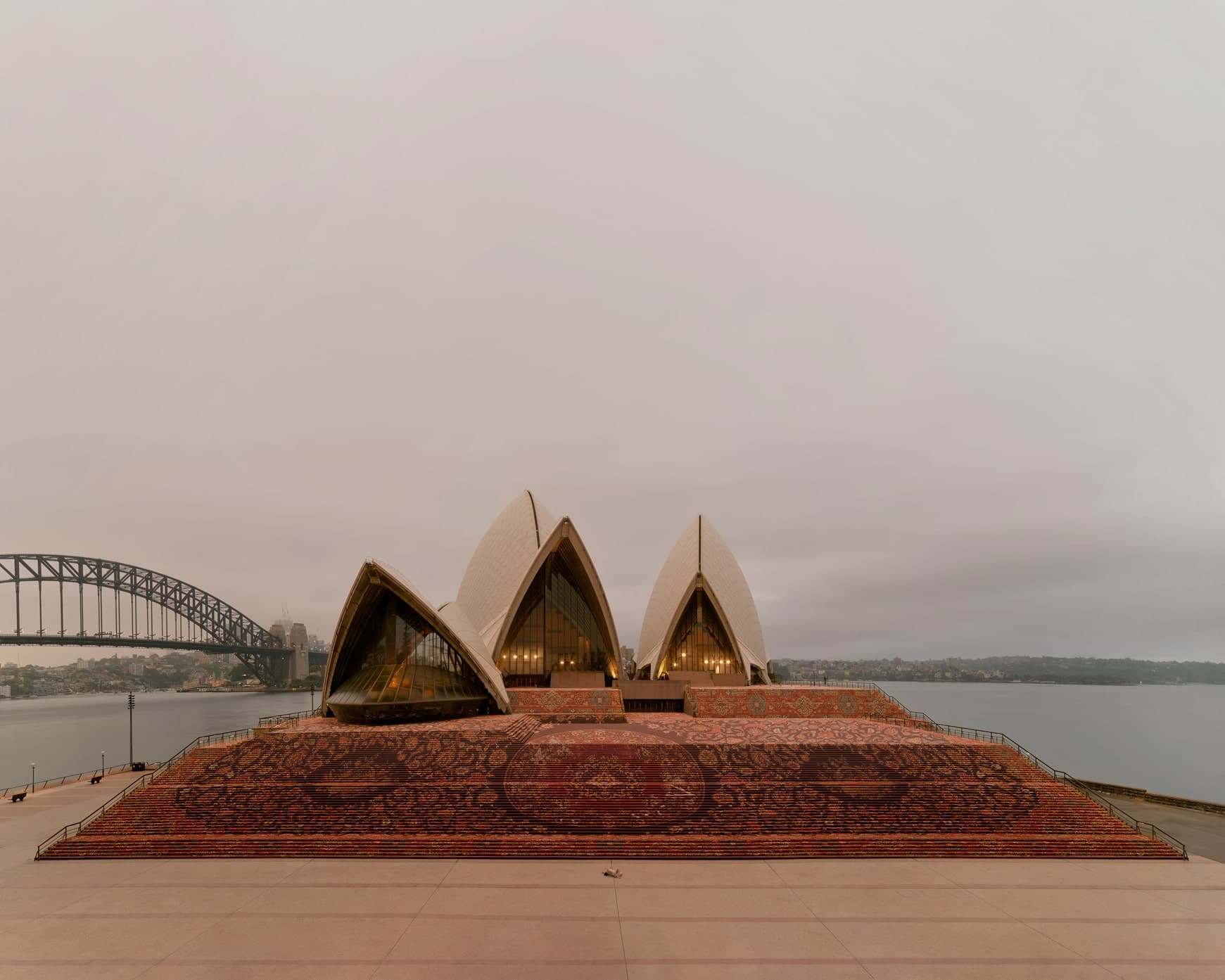
Stanislava Pinchuk, also known by her artistic moniker Miso, has unveiled her new major body of work, The Red Carpet. Commissioned by the All About Women Festival and developed over a two-year period, The Red Carpet features a large-scale photograph of the Sydney Opera House whose forecourt is covered with Ukrainian Bessarabian rug transposed with the damaged topography of Kiev's post-revolution Maidan Square (marking the beginning of Ukraine's illegal invasion, annexation and ongoing civil war).
The work will also be presented alongside a talk by Pinchuk titled The Thread of War. In the lead up to the festival we talked with the artist about International Women's Day, war and conflict as sources of inspiration, and the women that shape her personal and creative process.
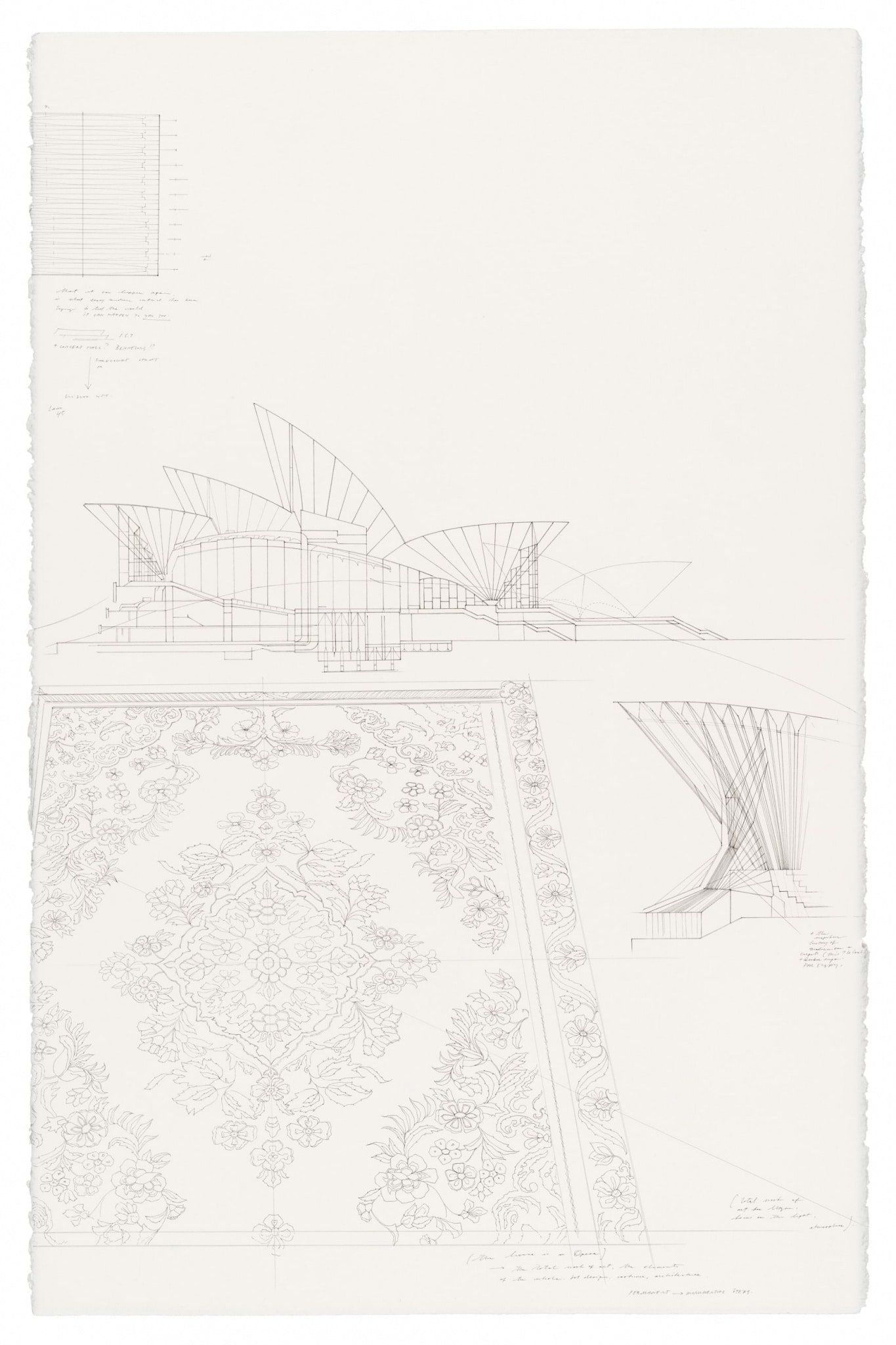
What was the genesis behind this latest work, The Red Carpet?
The Red Carpet is an architectural intervention and performance work that was shot earlier this year - covering the steps of the Sydney Opera House with a Ukrainian Bessarabian rug.
Within the carpet's design is a data-map of the damaged topography of Kiev's Maidan square protests, which I also surveyed ... the work, in a sense, is a protest work. Or one of solidarity. Town-square to town-square, between the two countries I've called home.
The real genesis, I've been thinking lately, was actually growing up with two things on my wall: a huge Persian rug and a world map pinned to it (USSR edition, of course!). It's funny to think of that now.
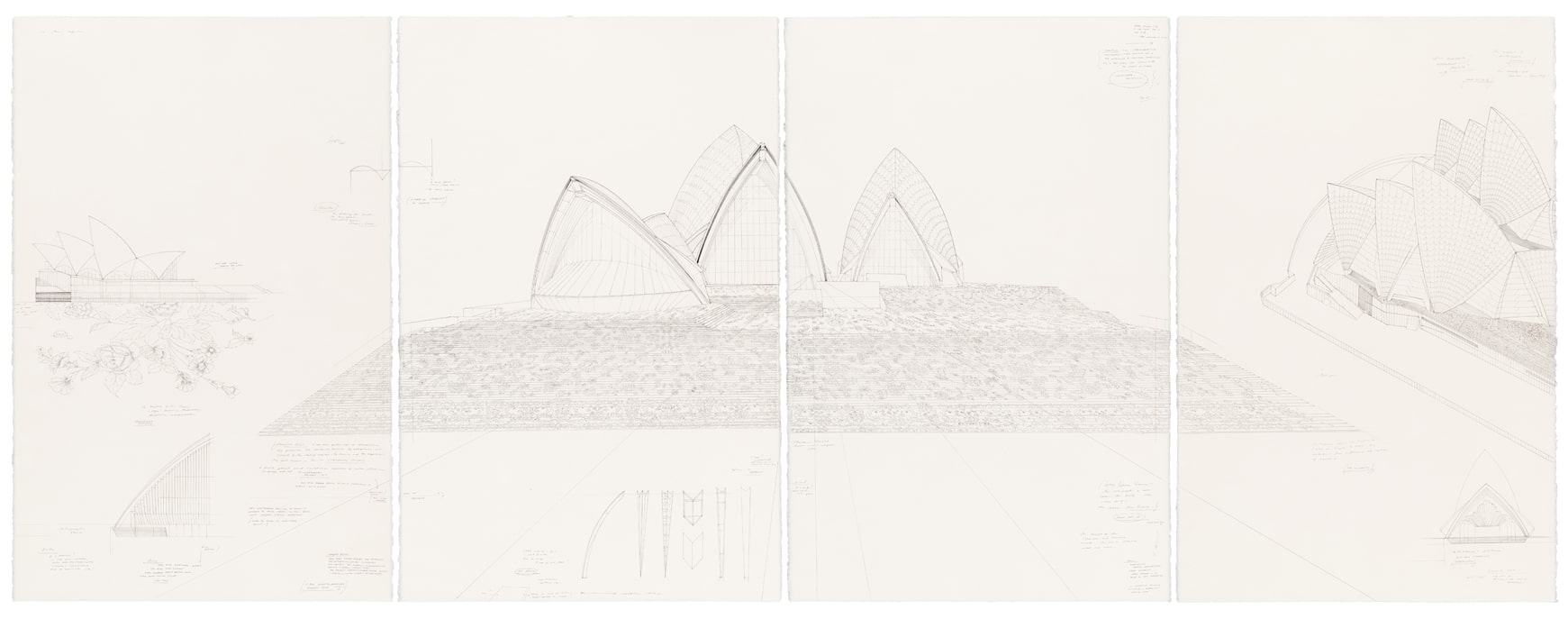
What’s the significance for you exhibiting at the Sydney Opera House?
In working with data and textiles, like in all my practice, I wanted The Red Carpet to reference a wider canon of women recording their experiences of conflict through the art mediums which were most commonly available to them across history and place - some form of needle, loom and thread.
In the context of the building, the architectural intervention becomes a literal ‘red carpet’ for the Sydney Opera House - acknowledging the history and labour of women's domestic arts as the foundation and path leading to 'starchitecture.'
And in a way, it's a love letter to Jørn Utzon, the architect of the Opera House. He had a profound esteem for textile and tapestry work, and saw them as sitting in a wholistic vision within his exterior architecture practice. Actually, two really exceptional examples of his tapestries can be found within the Sydney Opera House, one of which, I've asked for my talk to be held next to!
Tell us about your creative process for this – how do your ideas come to life and how long did the project take from conception to completion?
Obviously, it's been a huge production. I don't even know where to begin. Two years of a million samples, ideas, applications, technicians. False starts, abrupt changes.
The project initially began with me wanting to make real, woven rugs - full of maps, in a long procession. I was obsessed with a rough mobile phone image from a suburb in Cairo of a line of carpets laid out for journalists when a head of Rameses was discovered a few years ago. This project, of course, evolved a lot in scope and ambition from there - with encouragement from AAW and The Sydney Opera House, and Antidote Projects. So, full circle, I still do dream of making tufted, domestic carpets!
Your exhibition opens on International Women’s Day. What does IWD mean to you?
It was always a huge day when I was growing up in Ukraine. And it’s been really nice living in Sarajevo, where it’s easily the busiest day of the year on the streets - more than any religious or public holiday.
What’s the significance of showing The Red Carpet on IWD?
I've been really lucky to be commissioned by the Sydney Opera House's All About Women Festival, which always runs on the day. But I couldn't think of a better date to release the work for.
The work is very much about domesticity, and violence - and for me, it makes a second, more personal gesture. I think making this work has been my way of keeping afloat, honestly. So to release it on such a day, is a huge catharsis.
And speaking at the Opera House, I'd really like to speak about how much the court systems in Australia and Ukraine alike; systematically geared to failing women in regards to sexual and domestic violence. We're in a critical state for reform.
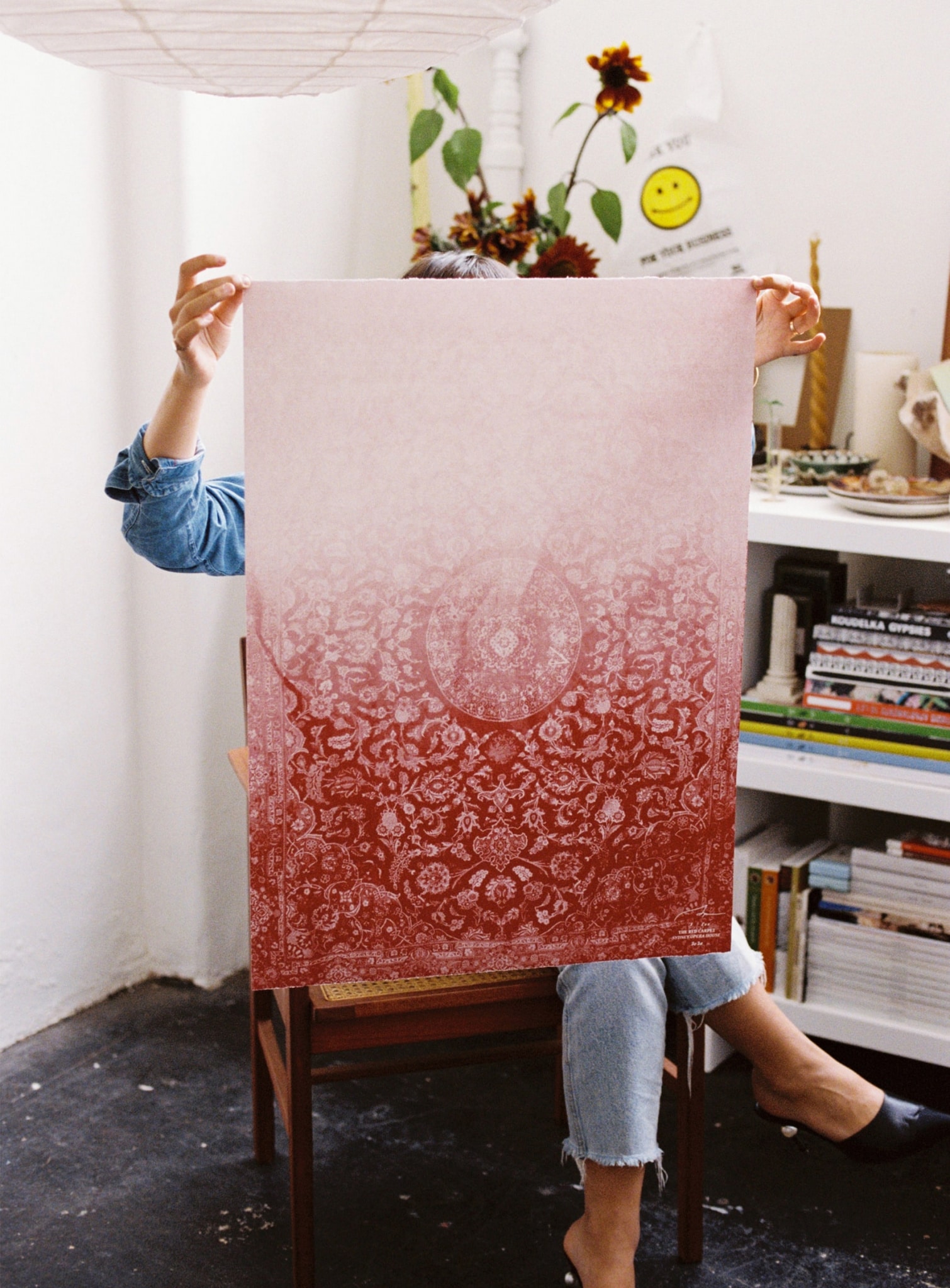
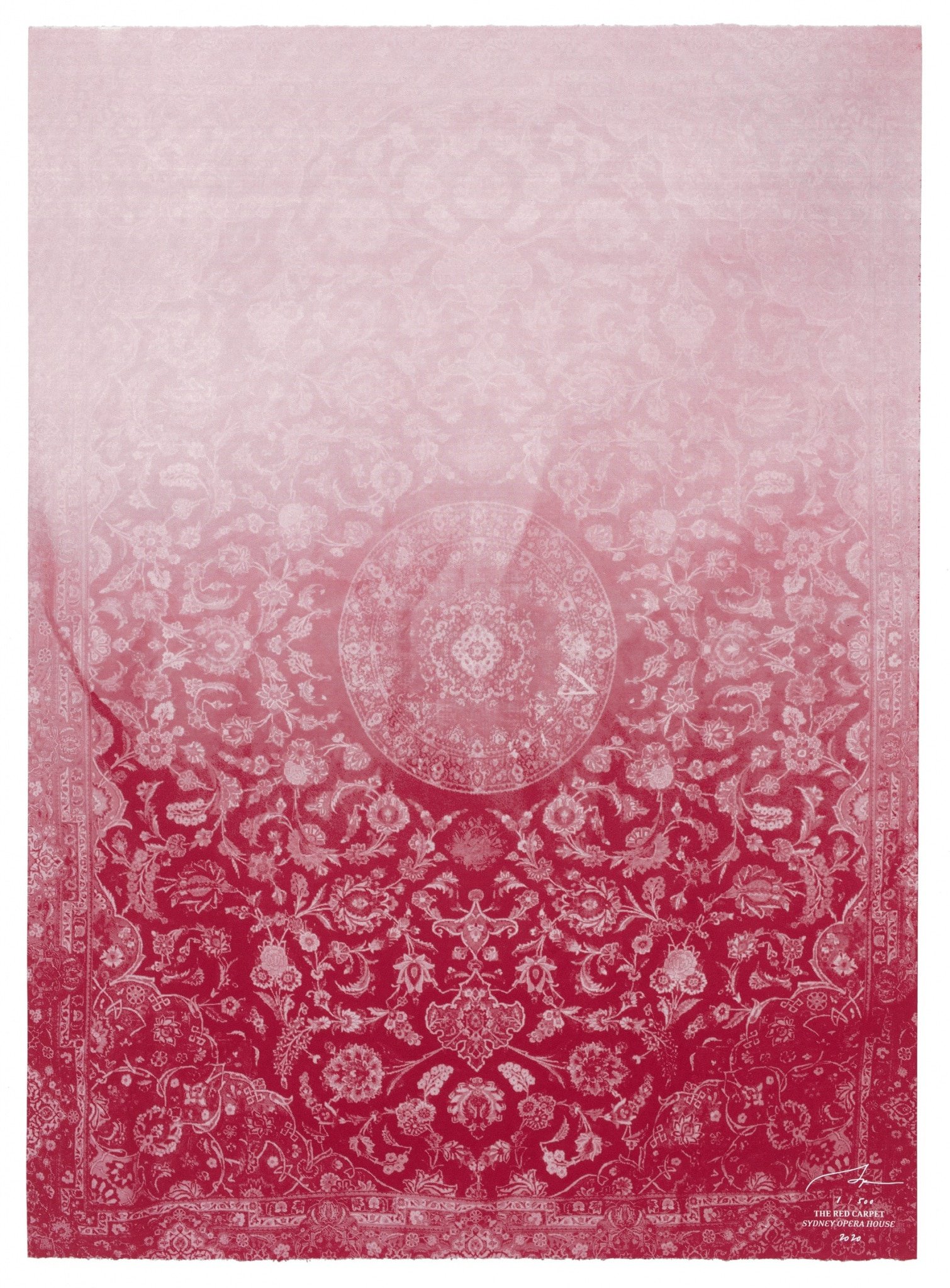
"The two year production of this work has been one of the most breaking, triumphant experiences of my life."
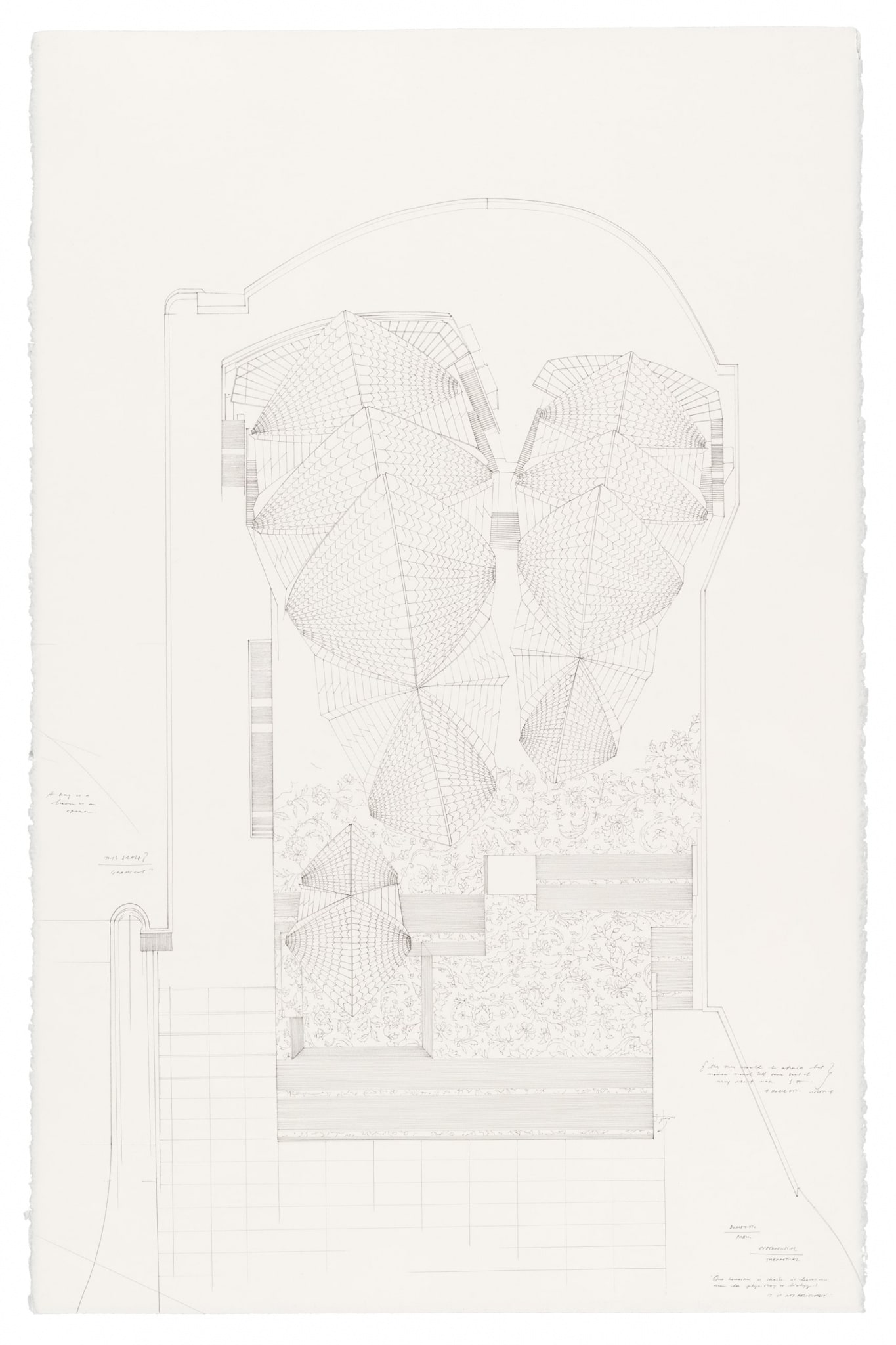
What are the complications or obstacles with creating such a large-scale work?
Of course, a lot of obstacles came from working with such a special, heritage listed building. A lot of obstacles came from health and safety, and issues of public access. A lot of obstacles came from that I funded the entire work from my own savings - so we had to be very resourceful with our production team.
But I'm very proud that for the million production and permission iterations, the project never changed aesthetically or conceptually. That was not an easy feat as an artist! And I'm deeply indebted to my curator and co-producer, Grace Partridge of Antidote Projects, who really held the same vision and conviction without wavering.
Your IWD talk, Thread of War, focuses on the historical significance of textiles and their use as a conduit for female disruption. What messages do you convey (or disrupt) within your own works?
I always hope to make people look at conflict in a new way. Perhaps to draw people in with a beautiful image, and then to reveal the true nature of what you are seeing - when you get close. I love that double bluff, and I think beauty - and the subversive nature of textiles therein - are really the perfect conduits to have a visual language that speaks in a different way.
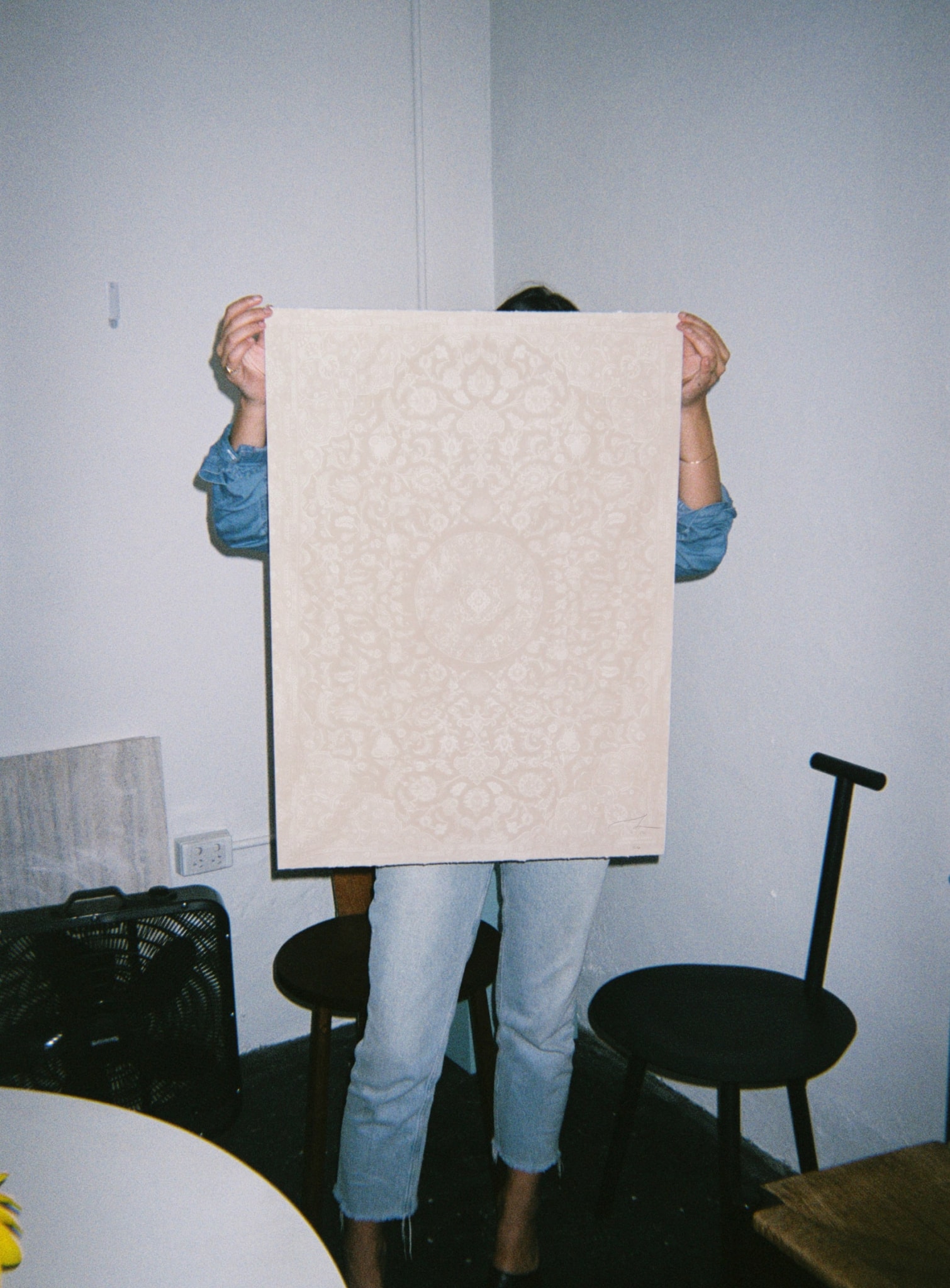
War and conflict is a constant source of inspiration for your creative expression. What is it about the subject that fascinates/compels you to create?
I suppose seeing a civil war in my home, over the last seven years, has been a profound rift and heart-break. It was unimaginable to me that this was something I would see in my lifetime. At a certain point, it felt impossible to make work about anything else.
"I think the work with data-mapping and surveying changing conflict topographies, became a passionate academic project - and something that I felt I wasn’t seeing researched or documented in quite the same way."
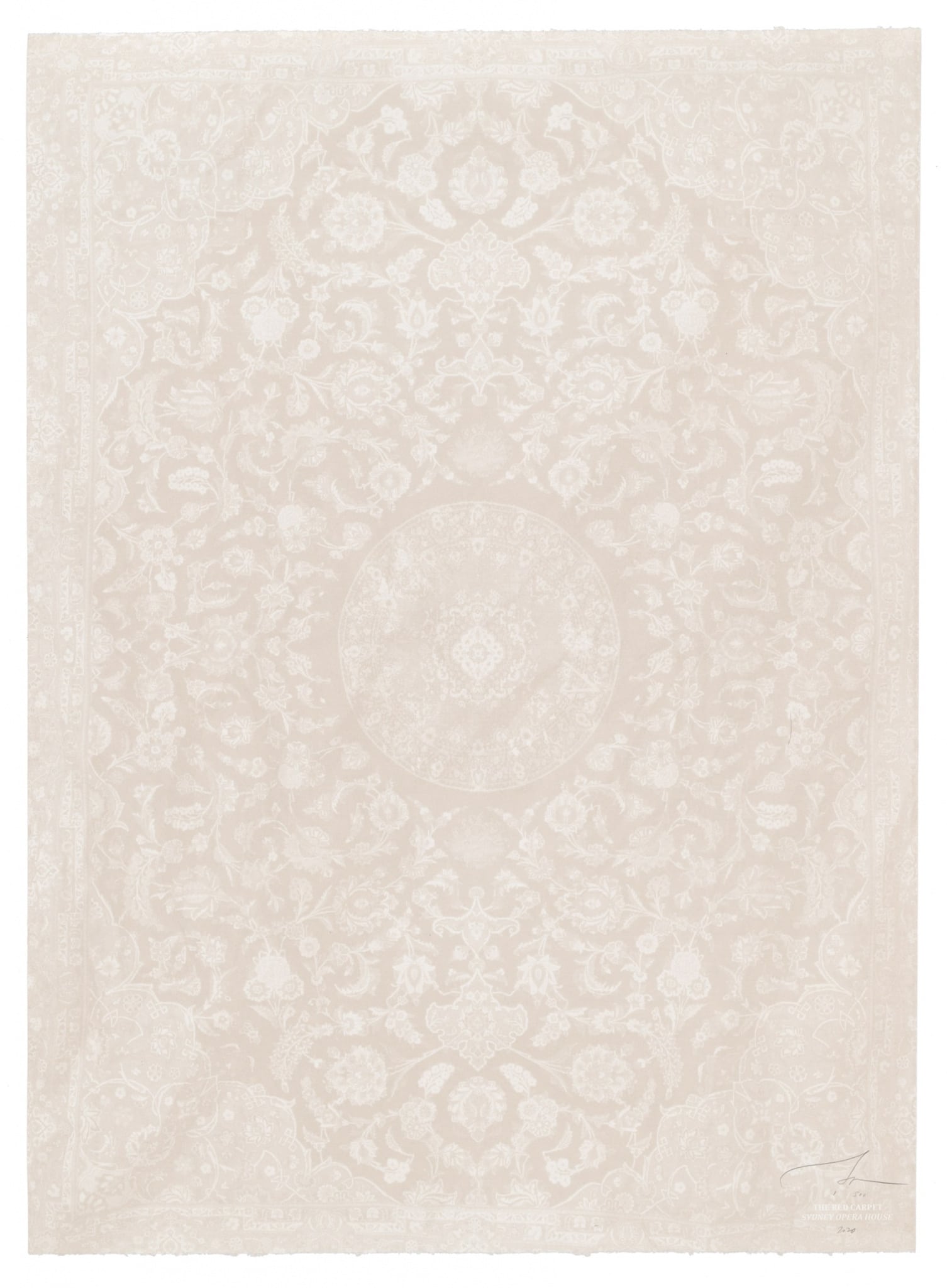
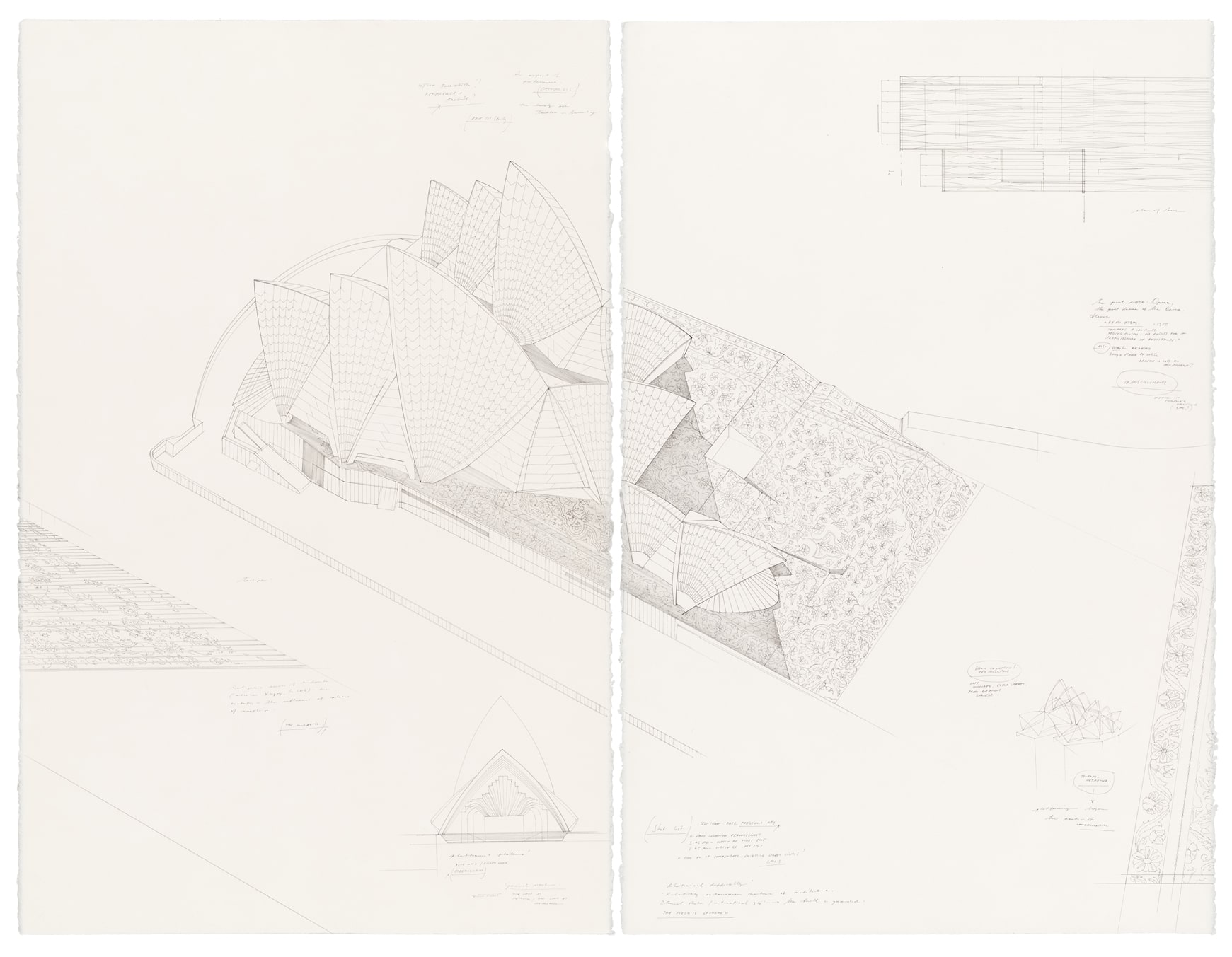
Can you tell us about some women in your life that you find inspiring?
I’m really lucky to have a strong, chosen creative family, that laughs and cries and sweats together, and keeps the inspiration sacred. Del Kathryn Barton, Anna Plunkett (and Luke Sales!) of Romance Was Born. “Dreamz” team that keeps morale among the troops.
A huge encouragement for the performance element of The Red Carpet was my friend Florence Welch, the musician and dancer, who really encouraged me to take the brave leap. And I’m so glad I did. That’s an inspiration I owe a lot to.
And of course, my curator and co-producer on this project, Grace Partridge from Antidote Projects, has been an incredible sister and spirit through this two year beast. The emotional support and strength, in both directions, and in low lows and hard hours, has been a real testament to the power of working with women. And the real belief in the project as a woman. The constant diplomacy, love, kindness and resilience still blows me away, even now, in the last moments of the project.
And while I’m at it, my epic publisher, Camille Vignaud of La Chambre Graphique Paris. Another dear sister that bleeds for the work, and rides the wild wave. We also released a new book this week, and I've been so grateful for her support while I've been sideways in Sydney. The last book, I took the load as she'd just had her child. Women are pretty wonderful with each other like that.
What are some other projects you are working on/looking forward to this year?
After this, I’m writing a book on the history of tattooing and textiles for the Wellcome Museum in London. I’m working on my first retrospective survey exhibition, which opens at Heide MoMA on June 27. All the data works, and the first full showing of all the Opera House works. After that I have an exhibition at the National Museum of Bosnia and Herzegovina, in Sarajevo, where I’ve been living over the last year. And from there I begin making a film, on a global shoot, commissioned by ACMI for a solo show next year ... and then another retrospective survey. A few public art and architectural projects. It’s a lot for a woman working alone, but I’m excited!
